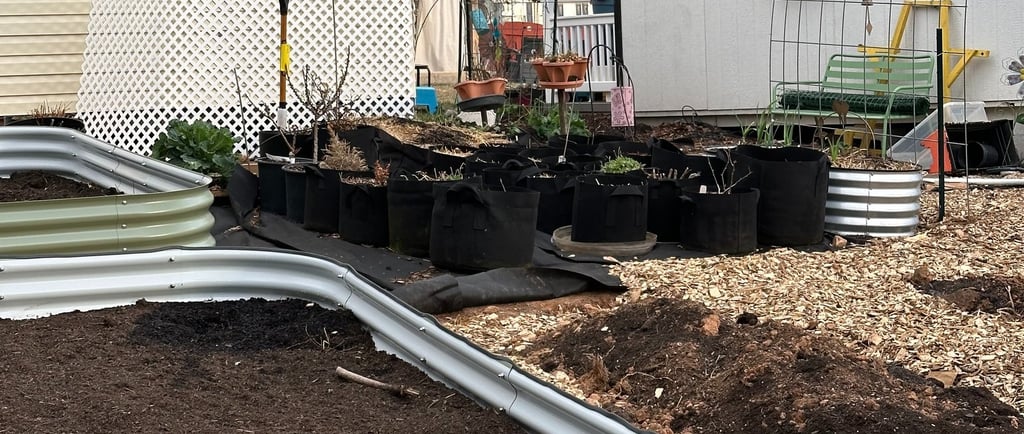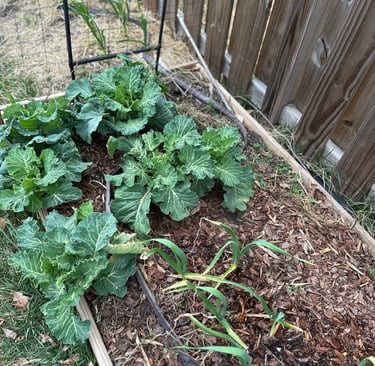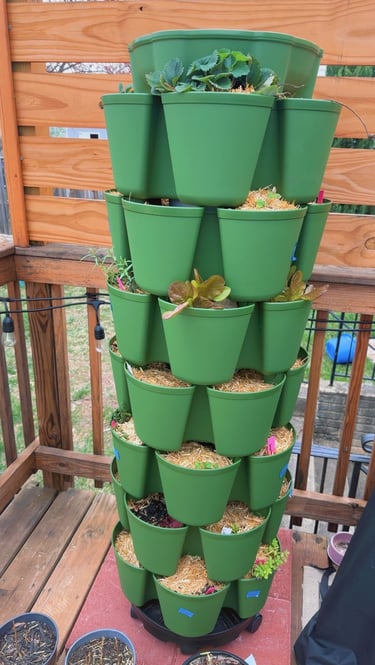How to Start a Small Kitchen Garden: A Beginner’s Guide
Blog post description.
GROWING
3/29/20252 min read


Imagine stepping into your backyard, balcony, or even a small indoor space and harvesting fresh herbs, vegetables, and fruits for your next meal. A kitchen garden allows you to grow your own food, save money, and enjoy a rewarding hobby. Whether you have a large yard or just a small corner, you can create a thriving kitchen garden using raised beds, containers, or vertical gardening techniques.
Choosing the Right Plants
For a small kitchen garden, choose plants that are easy to grow and yield a good harvest in limited space. Some excellent options include:
Herbs: Basil, cilantro, thyme, rosemary, parsley
Leafy greens: Lettuce, spinach, kale, Swiss chard
Vegetables: Tomatoes, peppers, radishes, carrots, green onions
Fruits: Strawberries, dwarf citrus trees, blueberries
Raised Beds and Container Gardening
If you have a backyard, raised beds are a great way to grow your plants. They provide good drainage, reduce weed growth, and make gardening more accessible. Use untreated wood, bricks, or metal frames to construct your raised beds.
For those with limited space, container gardening is an excellent alternative. Pots, buckets, and grow bags can house a variety of plants. Ensure your containers have drainage holes to prevent root rot.
Vertical Gardening for Small Spaces
If you're short on ground space, think vertically! Use hanging baskets, trellises, or wall-mounted planters to grow climbing plants like peas, beans, and cucumbers. Vertical gardening maximizes your growing area and adds an aesthetic appeal to your home.
Watering and Fertilizing Your Plants
Proper watering is crucial for a healthy kitchen garden. Most plants need about an inch of water per week. Water early in the morning or late in the afternoon to reduce evaporation.
For fertilization, use organic compost, fish emulsion, or balanced liquid fertilizers to provide essential nutrients. Composting kitchen scraps can create a rich, natural fertilizer for your plants.
Preserving Your Harvest
To enjoy your harvest beyond the growing season, consider these preservation methods:
Freezing: Great for herbs, berries, and vegetables like bell peppers and green beans
Drying: Ideal for herbs, tomatoes, and peppers
Pickling: Cucumbers, carrots, onions, and beets can be preserved in vinegar solutions
Canning: Tomatoes, jams, and sauces can be canned for long-term storage
Benefits of Growing Your Own Food
Starting a kitchen garden offers numerous benefits, including:
Healthier food: Homegrown produce is free from harmful pesticides and chemicals.
Cost savings: Growing your own vegetables can reduce grocery expenses.
Sustainability: Less packaging waste and transportation means a smaller carbon footprint.
Stress relief: Gardening is therapeutic and promotes mental well-being.
By following these simple steps, you can start your own kitchen garden and enjoy fresh, homegrown food all year round. Whether in a backyard or on a balcony, growing your own food is a rewarding and sustainable way to enhance your lifestyle. Happy gardening!




Grow
Cultivating wellness through gardening and sustainability.
Email Us:
© 2025. Healing IN Garden & Farm LLC. All rights reserved.
Created by askdolo.com
